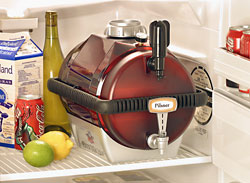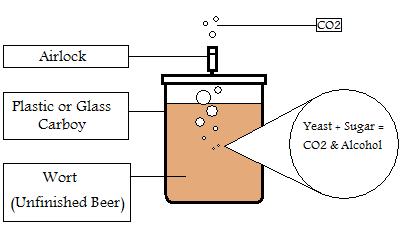I’ve never quite seen anything like the Beer Machine Home Brewing Kit. It’s completely self contained and if you use the Beer Machine Ingredients it only ends up costing about 30 cents a glass. This picture is what caught my eye:
It’s really great that the Beer Machine fits right in the fridge. It’s got a built in tap – it would be nice to have beer on tap in my fridge. It also comes with some really nice features, including an airlock that allows the CO2 to exit during fermentation while prevention air from entering the fermenter. The airlock also allows you to see when fermentation is complete and it is time to brew your beer. It has a built in pressure gauge, which tells you if you have the proper carbonation in your brew (which up until this point I’ve only seen on full scale Home Brewing Keg Systems).
They offer premium beer mixes, and at about 30 cents a glass, it’s cheaper than PBR (you can’t really go wrong with that, right?). Check out out the Beer Machine compares to the other Home Brewing Kits.
The only the better than good beer is good cheap beer –
Cheers!









